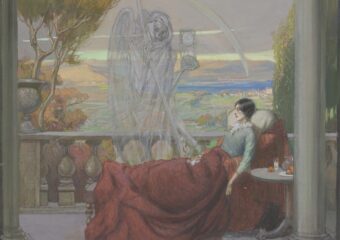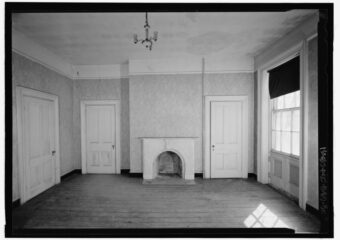The experience of migraine headache is searing, its causes vexing, and its treatments unsatisfying. The condition is highly prevalent and writers, poets, and artists have rendered the experience across the millennia of civilization. Here is a comparison of some literary renderings of the migraine experience (fiction and nonfiction) with a classic biomedical text description.
The Biomedical
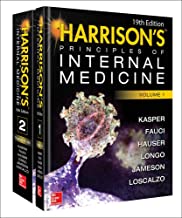
From Harrison’s Principles of Internal Medicine, 19th edition, McGraw-Hill, New York, 2016
A benign, episodic syndrome of headache associated with other symptoms of neurologic dysfunction in varying admixtures. Classic triad: premonitory visual (scotoma or scintillations), sensory, or motor symptoms; unilateral throbbing headache; and nausea and vomiting. Most patients do not have visual aura or other premonitory symptoms. Photo- and phonophobia common. Vertigo may occur. Focal neurologic disturbances without headache or vomiting (migraine equivalents) may also occur. An attack lasting 4-72 hours is typical, as is relief after sleep. Attacks may be triggered by glare, bright lights, sounds, hunger, stress, physical exertion, hormonal fluctuations, lack of sleep, alcohol, or other chemical stimulation.
The Literary
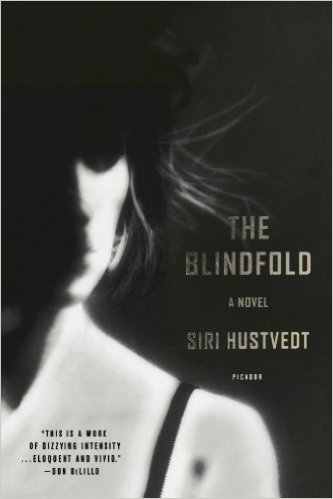
From The Blindfold, Siri Hustvedt, Picador, New York, 1992
The primary character in this novel is a young, female, graduate student in New York City around 1980. She suffers from terrible migraine headaches. Here she describes a particular migraine event to a physician specializing in migraine headaches and her doctor’s reduction of it to biomedical terms.
But as soon as I stepped inside my apartment, I felt a tug on my left arm, just as if someone had yanked it hard. I lost my balance and fell down. I was so dizzy and sick to my stomach that I didn’t get up for a long time. While I was sitting there on the floor, I saw lights, hundreds of bright sparks that filled up half the room, and after they disappeared, I saw a big, ragged hole in the wall. That hole scared me to death, and the strange thing was that I didn’t experience it as a problem with my vision. I really thought that part of the wall was missing. I don’t know how long it lasted, but after the hole was gone, the pain started.
p. 93
Dr. Fish picked up the microphone. ‘The patient suffered a scintillating and a negative scotoma.’

From Firestarter, Stephen King, Viking Press, New York, 1980
One of the primary characters in this novel possesses psychic powers he received while volunteering in an experimental drug study while in college during the 1960s. When he puts these powers to use too often, he experiences terrible migraine headaches. The author of the novel, Stephen King, suffers from migraines himself. Here King’s character describes his migraine headaches.
The headache would get worse until it was a smashing weight, sending red pain through his head and neck with every pulse beat. Bright lights would make his eyes water helplessly and send darts of agony into the flesh just behind his eyes…Drill bits in his temples. Small noises magnified, ordinary noises as loud as jackhammers, loud noises insupportable. The headache would worsen until it felt as if his head were being crushed inside an inquisitor’s love cap. Then it would even off at that level for six hours. He would be next to helpless.
p. 6
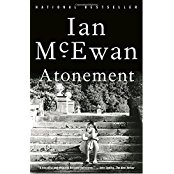
From Atonement, Ian McEwan, Anchor Books, New York, 2001
The matriarch figure in this novel, Emily Tallis, has suffered from migraine headaches for years. She knows when they are coming by the prodromal syndrome that precedes them. McEwan describes her prodrome and how she responds to it in this section of the book.
…Emily Tallis had withdrawn from the white glare of the afternoon’s heat to a cool and darkened bedroom. She was not in pain, not yet, but she was retreating before its threat. There were illuminated points in her vision, little pinpricks, as though the worn fabric of the visible world was being held up against a far brighter light. She felt in the top right corner of her brain heaviness, the inert body weight of some curled and sleeping animal; but when she touched her head and pressed, the presence disappeared from the coordinates of actual space. Now it was in the top right corner of her mind, and in her imagination she could stand on tiptoe and raise her right hand to it. It was important, however, not to provoke it; once this lazy creature moved from the peripheries to the center, then the knifing pains would obliterate all thought, and there could be no chance of dining with Leon and the family tonight. It bore her no malice, this animal, it was indifferent to her misery. It would move as a caged panther might: because it was awake, out of boredom, for the sake of movement itself, or for no reason at all, and with no awareness. She lay supine on her bed without a pillow, a glass of water within easy reach and, at her side, a book she knew she could not read. A long, blurred strip of daylight reflected on the ceiling above the pelmet was all that broke the darkness. She lay rigidly apprehensive, held at knifepoint, knowing that fear would not let her sleep and that her only hope was in keeping still…
pp. 60-61
…the fear of pain kept her in place. At worst, unrestrained, a matching set of sharpened kitchen knives would be drawn across her optic nerve, and then again, with a greater downward pressure, and she would be entirely shut in and alone. Even the groaning increased the agony.
p. 63
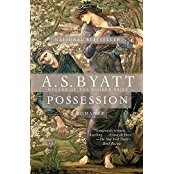
From Possession, A.S. Byatt , Random House, New York, 1990
In this novel, two modern-day scholars uncover letters between two Victorian poets. One of the poets suffers migraines and describes what happens during the prodrome and during the attack.
Oh sir—things flicker and shift, they are indeed all spangle and sparks and flashes. I have sat by my fireside all this long evening—on my safe stool—turning my burning cheeks towards the Aspirations of the flame and the caving-in, the ruddy mutter, the crumbling of the consumed coals to—where am I leading myself—to lifeless dust—Sir.
p. 212
I see whole bevies of shooting stars—like gold arrows before my darkening eyes—they presage Headache—but before the black—and burning—I have a small light space to say—oh what? I cannot let you burn me up. I cannot. I should go up—not with the orderly peace of my beloved hearth here—with its miniature caverns of delight, its hot temporary jewel-gardens with their palisadoes and promontories—no—I shall go up—like Straw on a Dry Day—a rushing wind—a tremor on the air—a smell of burning—a blown smoke—and a deal of white fine powder that holds its spillikin shape only an infinitesimal moment and then is random specks—oh no I cannot—
p. 213
Before Migraine-headaches there is a moment of madness. This has extended from the burning in the clearing—until this minute—and now speaks.
pp. 213-214
No mere human can stand in a fire and not be consumed.
Not that I have not dreamed of walking in the furnace—as Shadrach, Meshach and Abednego—
But we latter-day Reasonable Beings have not the miracle-working Passion of the old believers—
I have known—Incandescence—and must decline to sample it further.
The headache proceeds apace. Half my head—is merely a gourd full of pain—
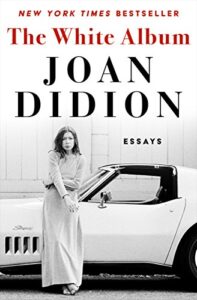
From In Bed: In The White Album, Joan Didion, Farrar, Straus and Giroux, New York, 1979
In this collection of essays, Joan Didion recounts her experience with migraine headaches in the essay entitled In Bed, written in 1968.
I simply had migraine headaches, and migraine headaches were, as everyone who did not have them knew were, imaginary. I fought migraine then, ignored the warnings it sent, went to school and later to work in spite of it, sat through lectures in Middle English and presentations to advertisers with involuntary tears running down the right side of my face, threw up in washrooms, stumbled home by instinct, emptied ice trays onto my bed and tried to freeze the pain in my right temple, wished only for a neurosurgeon who would do a lobotomy on house call, and cursed my imagination.
pp. 168-169
When I am in a migraine aura (for some people the aura lasts fifteen minutes, for others several hours) I will drive through red lights, lose the house keys, spill whatever I am holding, lose the ability to focus my eyes or frame coherent sentences, and generally give the appearance of being on drugs, or drunk. The actual headache, when it comes, brings with it chills, sweating, nausea, a debility that seems to stretch the very limits of endurance. That no one dies of migraine seems, to someone deep into an attack, an ambiguous blessing.
pp. 170-171
And once it comes, now that I am wise in its ways, I no longer fight it. I lie down and let it happen. At first every small apprehension is magnified, every anxiety a pounding terror. Then the pain comes and I concentrate only on that. Right there is the usefulness of migraine, there in that imposed yoga, the concentration on the pain. For when the pain recedes, ten or twelve hours later, everything goes with it, all the hidden resentments, all the vain anxieties. The migraine has acted as a circuit breaker, and the fuses have emerged intact. There is a pleasant convalescent euphoria. I open the windows and feel the air, eat gratefully, sleep well. I notice the particular nature of a flower in a glass on the stair landing. I count my blessings.
p. 172
Also:
Title picture: Migraine (brass sculpture)
Sven Tali
May 2018
Licensed under the Creative Commons Attribution-Share Alike 4.0 International license

